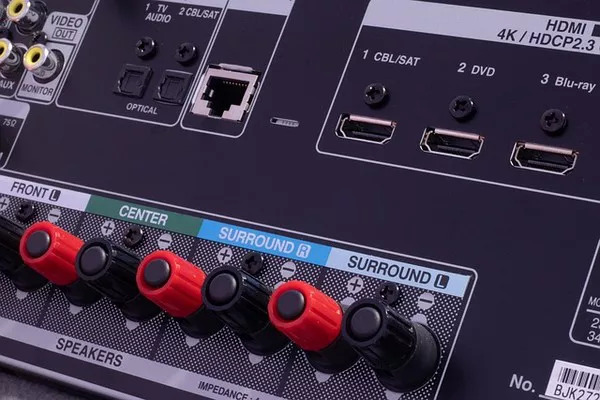Instrumentation amplifiers play a critical role in modern electronic systems, enabling precise and accurate signal conditioning in various applications. This article aims to provide a comprehensive understanding of instrumentation amplifiers, exploring their working principles, advantages, applications, and key design considerations. Whether you are an electronics enthusiast or a seasoned engineer, this article will deepen your knowledge of this essential circuitry.
The instrumentation amplifier, often abbreviated as “In-Amp,” is a specialized type of differential amplifier commonly used to amplify small differential input signals while rejecting common-mode noise. It has gained popularity in diverse applications, such as medical devices, industrial automation, and sensor interfacing, due to its ability to offer high gain, excellent common-mode rejection ratio (CMRR), and low offset voltage.
Working Principle
An instrumentation amplifier consists of three operational amplifiers (Op-Amps) and several precision resistors. The two Op-Amps at the input stage form a differential amplifier, which amplifies the difference between the two input signals, rejecting any common-mode signal present. The third Op-Amp acts as a buffer, providing a high input impedance and low output impedance to maintain the amplifier’s gain and performance.
Key Components of an Instrumentation Amplifier
a. Differential Amplifier: This forms the core of the instrumentation amplifier and is responsible for amplifying the differential input signal.
b. Precision Resistors: The selection of high-precision resistors is crucial in maintaining accuracy and minimizing errors.
c. Buffer Amplifier: The buffer helps reduce the loading effect on the differential amplifier, ensuring high input impedance.
Advantages of Instrumentation Amplifiers
a. High Gain: In-Amps offer high gain, making them suitable for amplifying weak signals from sensors or transducers.
b. CMRR: The primary advantage of instrumentation amplifiers is their exceptional Common-Mode Rejection Ratio (CMRR), which allows them to reject common-mode noise effectively.
c. Low Output Impedance: The buffer amplifier provides a low output impedance, making it less sensitive to external load variations.
d. Adjustable Gain: Many instrumentation amplifiers allow the user to set the gain through external resistors, providing flexibility in different applications.
Applications of Instrumentation Amplifiers
a. Medical Instrumentation: In-Amps are widely used in ECG (electrocardiography), EEG (electroencephalography), and EMG (electromyography) devices.
b. Industrial Process Control: They find application in monitoring and control systems, ensuring accurate data acquisition from various sensors.
c. Strain Gauge Measurement: In-Amps are used to measure tiny changes in resistance in strain gauges to determine physical force or deformation.
d. Temperature Measurement: Precise temperature sensors utilize instrumentation amplifiers to convert small voltage changes into meaningful temperature readings.
e. Bridge Amplification: In-Amps are employed to amplify the output of bridge-based sensors, such as pressure and load cells.
Design Considerations for Instrumentation Amplifiers
a. Gain Accuracy: The accuracy of the gain depends on the matching of resistors. Employing precision resistors is vital to achieving high gain accuracy.
b. Input Impedance: In-Amps should have high input impedance to minimize the loading effect on the measured signal source.
c. Noise Considerations: Minimizing noise is crucial, especially in low-level signal amplification applications. Selecting low-noise Op-Amps and resistors is essential.
d. Power Supply Rejection Ratio (PSRR): Ensuring good PSRR helps maintain stable performance even in the presence of power supply fluctuations.
e. Temperature Drift: To ensure stable operation over temperature variations, use resistors with low temperature coefficients.
Common Configurations of Instrumentation Amplifiers
a. Single-Supply In-Amp: Designed to operate with a single power supply, suitable for battery-powered applications.
b. Differential Output In-Amp: Provides a differential output instead of a single-ended output, beneficial in balanced signal transmission.
c. Programmable Gain In-Amp: Allows users to change the gain of the amplifier dynamically, making it versatile for multi-sensor applications.
Troubleshooting and Testing
a. Input Signal Quality: Ensure that the input signals are clean and free from noise, interference, or common-mode voltage.
b. Offset Voltage and Nulling: Calibration techniques can be employed to minimize offset voltage and improve precision.
c. Output Saturation: Avoid overloading the output stage to prevent signal distortion and achieve accurate amplification.
Conclusion
Instrumentation amplifiers are indispensable components in modern electronics, enabling accurate and reliable signal conditioning across various applications. Their high gain, CMRR, and precision make them ideal for critical measurements in medical, industrial, and scientific fields. Engineers must carefully consider the design parameters and application requirements when selecting and implementing instrumentation amplifiers to ensure optimal performance and robustness in their systems. As technology advances, instrumentation amplifiers will continue to play a vital role in shaping the future of electronics and signal processing.

